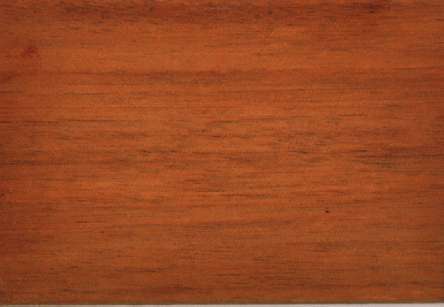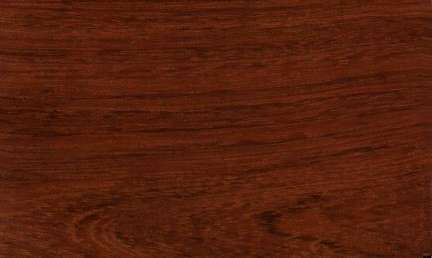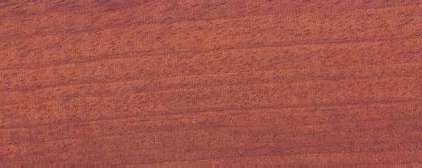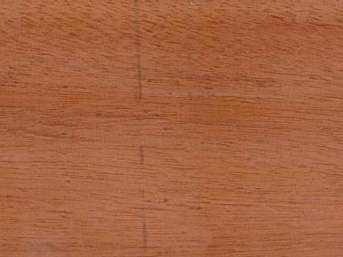     
Courbaril (Hymenaea courbaril)
Family: Leguminosae
Common names: Abati, Abati copal do Brasil, Abati timbary, Alga, Algarobo, Algarrobo, Animebaum, Arati, Arvore copal, Asucar-juain, Avati, Azucar huayo, Bati timbary, Bois de courabaril, Bois de courabil, Bois de courbaril, Bois de simire, Brazilian gum-copal tree, Cacachien, Cachien, Caguairan, Cannariboom, Caouroubali, Caroubier, Caroubier de la Guyane, Cataqui-iamani, Chimidida, Cimiri, Ciruelo, Coapinol, Coapinoloe, Colorado, Comer de arara, Copal, Copalier, Copalier d'Amerique, Copalier de Amerique, Copinol, Copinole, Corobore, Coubaril de savane, Courabil, Courabil hout, Courbaril, Courbaril de savane, Courbaril montagne, Courbaril plum, Courbarilhout, Cuapinol, Cuapinole, Cuapinoli, Cupainol, Curbaril, Diphylle pois confiture, Diphylle pois de confiture, Gaupinol, Gom anime boom, Gomme armimec, Guapinol, Guapinole, Gum-anime tree, Henschreckenbaum, Henschrenkenbaum, Iibiuva, Itaiba, Jassai, Jataby, Jatahy, Jatahy cafe, Jatahy peba, Jatahy roxa, Jatahy roxo, Jatai, Jatai monde, Jatai uba, Jatai-acu, Jataiba, Jataizinho, Jatany, Jatauba, Jatay, Jatei, Jatel, Jatoba, Jatoba de anta, Jatoba de porco, Jatoba roxa, Jatoba trapuca, Jatoba verdadeiro, Jatobs, Jatuba, Jengi kanda, Jetahy, Jetahy accu, Jetahy preta, Jetahy roxo, Jetai, Jetai de Pernambuco, Jetaiba, Jetaici, Jetay, Jetoba roxo, Jetui peba, Julchihout, Jupati, Jut, Jutaahy assu, Jutahy, Jutahy assu, Jutahy cafe, Jutahy catina, Jutahy catinga, Jutahy da varzea, Jutahy do campo, Jutahy do igapo, Jutahy miry, Jutahy peba, Jutahy pororoca, Jutahy roxo, Jutai, Jutai branco, Jutai cafe, Jutai catinga, Jutai da varzea, Jutai do campo, Jutai do igapo, Jutai grande, Jutai mirim, Jutai peba, Jutai pororoca, Jutai roxo, Jutai-acu, Jutany, Jutany de campo, Jutay branco, K'wannarri, Kakanjan boesoe, Karvanari, Kawaknalli, Kawanari, Kwanari, Leather-leaved locust, Leathery-leaved locust, Legno locusta, Locus, Locus semirie, Locusboom, Locust, Locust gum, Locustrier, Lokisi kaka, Lokisie, Loksi, Lokus, Lokustbaum, Marbre, Masaicaran, Moire, Nazareno, Nere, Not, Oleo de jatai, Oleo jatahy, Pacuy, Pak, Pakay, Palito, Palito colorado, Pampa estoraque, Pie de venado, Pois confiture, Quapinole, Quapinole jutahy, Quauhpinolli, Quebra machado, Rode locus, Rode rode locus, Semirie, Simiri, Simiri locust, Simirie, Sirari, South American locust, Spruikhaanboom, Stinking toe, Stinking-toe, Surinaamsch teakhout, Surixkra, Tema, Trapuca, Tsi-tsi-nau, Urapinol, West Indian locust, Westindisch teakhout, Westindsch teakhout, Yatayba, Yutachi, Yutahi, Yutahy, Yutayba yutahy
Distributed in: Argentina, Belize, Bolivia, Brazil, Colombia, Costa Rica, Cuba, Dominican Republic, French Guiana, Guadelope [France], Guatemala, Guyana, Haiti, Honduras, Jamaica, Malaysia, Mexico, Peru, Philippines, Puerto Rico [US], Puerto Rico, Suriname, Trinidad and Tobago, Venezuela (Central America, Latin America, Oceania and S.E. Asia)
Distribution overview: Southern Mexico, throughout Central America and the West Indies to northern Brazil, Bolivia, and Peru. The tree's best development is on ridges or slopes and high riverbanks. Throughout West Indies from Cuba and Jamaica to Trinidad and Tobago. Also from central Mexico to Peru, Bolivia, Brazil, and French Guiana. Rarely planted in southern Florida. Ranging from Tropical Dry to Wet through Subtropical Dry to Wet Forest Life Zones.
Common uses: Agricultural implements, Bedroom suites, Bent Parts, Boat building, Broom handles, Cabinetmaking, Canoes, Chairs, Chests, Concealed parts (Furniture), Crossties, Desks, Dining-room furniture, Domestic flooring, Dowell pins, Dowells, Drawer sides, Factory flooring, Fine furniture, Floor lamps, Flooring, Furniture , Furniture components, Furniture squares or stock, Handles, Hatracks, Kitchen cabinets, Lifeboats, Living-room suites, Office furniture, Parquet flooring, Radio - stereo - TV cabinets, Railroad ties, Rustic furniture, Shafts/Handles, Shipbuilding, Stools, Sub-flooring, Tables , Tool handles, Turnery, Utility furniture
Product sources: The ITTO reports that the species is an important source of timber for export. Supplies of Courbaril are rather limited on the US market, but the material may be available on the European market.
Environment profile: Widespread
Tree size: Tree height is 10-20 m
Colors: the heart isReddish brown, Yellow to golden-yellow to orangeand the sapwoodWhite to yellow, Whitish.The grain isStriped figure, the textureMedium to coarseand the lusterMedium
Natural durability: Susceptible to marine borer attack, Very durable
Odor: No specific smell or taste
LightInduced Color Change: Darker
Kiln Schedules: UK=E US=T6D2/T3D1 Fr=5
Kiln Drying Rate: Fairly rapid (11-17 days for boards under 32 mm, to 31-51 days for boards greater than 63 mm)
Drying Defects: Slight surface checking, Slight twist/warp
Ease of Drying: Moderate
Tree Identification: Bole/stem form is straight
Comments: Cells may contain dark gum-like deposits General finishing qualities are rated as good Generally strong and durable It is similar to the African species, Tchitola (Oxystigma oxyphyllum), Black locust (Robinia pseudoacacia ), and is superior to White oak (Quercus alba ). Fossilized gum from the bark of the species usually appears in excavations which might suggest the presence of Courbaril at such sights in the past
Blunting Effect: Medium effect
Boring: Easy
Cutting Resistance: Difficult to saw
Gluing: Moderate gluing properties
Mortising: Finishes well
Moulding: Good finishing
Movement in Service: Good finishing
Nailing: Holds nails well, Nails hold poorly
Planing: Tension & interlocked grain may cause woolly surfaces
Resistance to Impregnation: Sapwood is permeable
Resistance to Splitting: Poor
Response to hand tools: Poor response
Sanding: Good sanding qualities
Veneering qualities: Suitable for slicing, There is slight to moderate drying degrade and the potential for buckles and splits
Steam bending: Very good
Screwing: Possible if prebored, Screwing yields satisfactory results; Turning: Good results
Painting: Satisfactory; Polishing: Satisfactory; Staining: Good staining qualities
; Varnishing: Very well;
- Numerical data Metric
- Numerical data English
- Strength properties
- References
 |
 |
 |
 |
| Item |
Green |
Dry |
Metric |
| Specific Gravity |
0,68 |
0,83 |
|
| Density |
|
881 |
kg/m3 |
| Bending Strength |
846 |
1338 |
kg/cm2 |
| Crushing Strength |
112 |
129 |
kg/cm2 |
| Hardness |
|
1157 |
kg |
| Impact Strength |
|
|
cm |
| Shearing Strength |
|
178 |
kg/cm2 |
| Stiffness |
123 |
152 |
1000 kg/cm2 |
| Tangential Shrinkage |
8 |
|
% |
| Radial Shrinkage |
4 |
|
% |
| Weight |
865 |
673 |
kg/m3 |
| Maximum Load |
0,84 |
1,12 |
cm-kg/cm3 |
| Toughness |
|
259 |
cm-kg |
| Static Bending |
545 |
819 |
kg/cm2 |
|
 |  |  |  | | Item | Green | Dry | English | | Bending Strength | 12040 | 19032 | psi | | Crushing Strength | 1607 | 1842 | psi | | Density | | 55 | lbs/ft3 | | Hardness | | 2551 | lbs | | Maximum Crushing Strength | 6019 | 9349 | psi | | Shearing Strength | | 2543 | psi | | Static Bending | 7752 | 11662 | psi | | Stiffness | 1754 | 2172 | 1000 psi | | Toughness | | 225 | inch-lbs | | Work to Maximum Load | 12 | 16 | inch-lbs/in3 | | Specific Gravity | 0.68 | 0.83 | | | Weight | 54 | 42 | lbs/ft3 | | Radial Shrinkage | 4 | | % | | Tangential Shrinkage | 8 | | % | | Volumetric Shrinkage | 12 | | % | |
Density (dry weight) = 53-60 lbs/cu. ft. 0
Density (dry weight) = 46-52 lbs/cu. ft. 0
Density (dry weight) = 61-67 lbs/cu. ft. 0
Shrinkage, Tangential = fairly large 0
Shrinkage, Radial = moderate 0
Modulus of Elasticity (stiffness) = medium 0
Bending strength (MOR) = high 0
Shearing strength (parallel to grain) = medium 0
Max. crushing strength = high 0
Shrinkage, Radial = very small
Bending strength (MOR) = low
Shrinkage, Tangential = small
Shearing strength (parallel to grain) = very high
Bending strength (MOR) = medium
Shrinkage, Tangential = moderate
Max. crushing strength = medium
Shrinkage, Radial = fairly large
Hardness (side grain) = hard
Shrinkage, Radial = small
Modulus of Elasticity (stiffness) = low
Shrinkage, Tangential = large
Shrinkage, Radial = large
Shearing strength (parallel to grain) = high
Modulus of Elasticity (stiffness) = high
Hardness (side grain) = very hard
Density (dry weight) = 38-45 lbs/cu. ft.
Density (dry weight) = 31-37 lbs/cu. ft.
Bending strength (MOR) = very high
Work to Maximum Load = very low
Shrinkage, Tangential = very small
Shearing strength (parallel to grain) = very low
Modulus of Elasticity (stiffness) = very low
Max. crushing strength = very high
Hardness (side grain) = medium
Almonte, B.D.,1951,Fibre Measurements of Tropical Woods,F.A.O. For. & For. Product Studies Series No.3 Tropical Woods and Ag.,Residues as sources of pulp,pp28-33Berni, C.A., Bolza, E., Christensen, F.J.,1979,South American Timbers - The Characteristics, Properties and Uses of 190,Species,C.S.I.R.O Div. Building ResearchBhat, R.V.,1970,Pulping of Tropical Hardwoods,Indian Pulp and Paper Technology Association IPPTA,7(3,pp203-214Bodig, J. and B. A. Jayne. 1982. Mechanics of Wood and Wood Composites. Van Nostrand Reinhold Company, New York.Boone, R.S., C.J. Kozlik, P.J. Bois, and E.M. Wengert. 1988. Dry Kiln Schedules for Commercial Woods - Temperate and Tropical. United States Department of Agriculture (USDA, Forest Service, General Technical Report FPL-GTR-57, Forest Products Laboratory, Madison, Wisconsin.Brazier, J.D., Franklin, G.L.,1967,An Appraisal of the Wood Characteristics and Potential Uses of some,Nicaraguan Timbers,FAO for Forest Products Research Laboratory, Princes RisboroughBrazil -, I.B.D.F.,1980,Woods from Tucurui - characteristics and application,The Ag. Ministry Brazilian Institute for Forest DevelopmentBrowne, F.G.,1955,Forest Trees of Sarawak and Brunei and their Products.,Government Printing Office, Kuching, SarawakBrown, W.H.,1969,Properties and uses of Tropical hardwoods in the United Kingdom. Part 1,Nonstructural properties and uses.,Conference on Tropical hardwoods SC-5/TN-5, Syracuse UniversityBrown, W.H.,1978,Timbers of the World, No. 2 South America,TRADA, Red Booklet SeriesBrown, W.H.,1978,Timbers of the World, No. 9 Central America and the Caribbean,TRADA, Red Booklet SeriesChichignoud, M., G. Deon, P. Detienne, B. Parant and P. Vantomme.1990.Tropical Timber Atlas of Latin America.International Tropical Timber Organization (ITTO, Centre Technique Forestier Tropical, Division of CIRAD, 45 bis Avenue de la Belle Gabrielle, Nogent-sur-Marne, CEDEX, France.Chudnoff, M.,1984,Tropical Timbers of the World,U.S.A. Department of Agriculture, Forest Service, Forest Products,Laboratory, Madison.Clifford, N.,1953,Commercial Hardwoods - Their Characteristics Identification and,Utilization,Sir Isaac Pitman & Sons Ltd. LondonConstantine, Jr., A. J. 1959.Know Your Woods - A Complete Guide to Trees, Woods, and Veneers.Revised Edition.Revised by H.J. Hobbs.Charles Scribner's Sons, New York.Desch, H. E. 1957. Manual of Malayan Timbers. Malayan Forest Records, 28(30):315-318Dickinson, F.E.,1949,Properties and Uses of Tropical Woods 1,Tropical Woods,13(95,pp1-140Edmondson, C.H.,1949,Reaction of Woods from S.America and Caribbean areas to Marine Borers in,Hawaiian Waters,Caribbean Foresters,10(1,PP37-41Erfurth, T., Rusche, H.,1976,The Marketing of Tropical Wood B. Wood Species from S. American Tropical,Moist Forests,F.A.O. Forestry DepartmentFanshawe, D.B.,1954,Forest Products of British Guiana Part 1 Principal Timbers,Forest Department British Guiana Forestry Bulletin (New Series 2nd,Edition,No.1Flores Rodriguez, L.J.,1969,Description Caracteristicas y usos de 25 Maderas tropicales,Mexicanas,Camera Nacional de la Industria de la Construccion Serie Maderas de MexicoGuyana Forestry Department,1951,British Guiana Timbers - Locust (Hymenaea courbaril and Hymenaea davisii,British Guiana Forestry Department Leaflet 9Harrar, E.S.,1942,Some Physical Properties of Modern Cabinet Woods 3. Directional and Volume,Shrinkage,Tropical Woods,9(71, pp26-32Hoheisel, H.,1968,Identification of some Colombian wood Sp. and their possible use on the,basis of physical and mechanical properties,Latin American Forest Research and Training Institute, Merida VenezualaHoward, A.L.,1948,A Manual of Timbers of the World.,Macmillan & Co. Ltd. London 3rd ed.ITTO.New Marketable Species Technical Notes.Prepared by Centre Technique Forestier Tropical (CTFT, Division of CIRAD, 45 bis, Avenue de la Belle Gabrielle, 94736 Nogent-sur-marne Cedex, France.Kline, M. 1978. Hymenaea courbaril - Courbaril. In A Guide to Useful Woods of the World. Flynn Jr., J.H., Editor. King Philip Publishing Co., Portland, Maine. Page 190-191.Kloot, N. H. and E. Bolza.1961.Properties of Timbers Imported into Australia.Technological Paper No. 12.Division of Forest Products, Commonwealth Scientific & Industrial Research Organization, Melbourne, Australia.Kukachka, B.F.,1970,Properties of Imported Tropical Woods,Forest Research Paper FPL 125Lee, Y.H., Lopez, D.T.,1968,The Machining Properties of some Malayan Timbers,Malayan Forester,3,pp194-210Lincoln, W.A. 1986. World Woods in Color. Linden Publishing Co. Inc., Fresno, California.Little, E.L., Wadsworth, F.H.,1964,Common Trees of Puerto Rico and the Virgin Islands,U.S.A. Department of Agriculture, Agriculture Handbook,No.249Longwood, F.R.,1961,Puerto Rican Woods - Their Machining Seasoning and Related Characteristics,U.S.A. Department of Agriculture, Agriculture Handbook,No.205Longwood, F.R.,1962,Commercial Timbers of the Caribbean,U.S.A. Department of Agriculture, Agriculture Handbook,No.207Loureiro, A.A., Freitas da Silva, M.,1968,Catalogo das Madeiras da Amazonia (2 vols,Min. do Ultramar Belem BrasilMarshall, R.C.,1934,Trees of Trinidad and Tobago,Government Printer Port of Spain TrinidadMarshall, R.C.,1939,Silviculture of the trees of Trinidad and Tobago - British West Indies,O.U.P.,LondonPatterson, D.,1988,Commercial Timbers of the World, 5th Edition,Gower Technical PressPolak, A.M.,1992,Major Timber Trees of Guyana A Field Guide,The Tropenbos Foundation Wageningen, The NetherlandsRecord, S.J., Hess, R.W.,1943,Timbers of the New World,Yale University PressRecord, S.J., Mell, C.D.,1924,Timbers of Tropical America,Yale Univ. PressRecord, S.J.,1927,Trees of Honduras,Tropical Woods,10, pp10-47Rizzini, C.T.,1978,Arvores e Madeiras Uteis do Brasil: Manual de Dendrologia Brasileira,Editora Edgard Blucher LTDA BrazilSallenave, P.,1955,Proprietes Phyiques et Mecaniques des Bois Tropicaux de l'Union Francaise,C.T.F.TSallenave, P.,1971,Proprietes Physiques et Mecaniques des Bois Tropicaux (Deuxieme,Supplement,C.T.F.T.Schiffino, J.,1945,Riqueza Forestal Dominicana (Three volumes,Secretaria de Estado de Agric. Ind. y TrabajoSlooten van der, H.J., Martinez, E.P.,1959,Descripcion y propiedades de algunas madeiras Venezolanas,Inst. for Lation Americano de Investigacion y Capaciticion Boletin,Informaturo DirulgaturoSlooten, H.J. van der,1970,Evaluation Study of eighteen Wood Species from Guyana for Veneer and,Plywood Manufacture,Forest Industries Development Survey FAO Report SF/GUY9 Tech. Report,No.13,U.N.D.P.Spalt, H.A., Stern, W.L.,1956,Survey of Africa Woods 2,Tropical Woods 16(106) pp65-97Stone, H.,1924,The Timbers of Commerce and their Identification,William Rider & Sons Ltd. LondonSurinam Forest Service,1952,Surinam Timber - A Summary with brief descriptions of the main timber,species of Surinam,Surinam Forest ServiceSwabey, C.,1941,The Principal Timbers of Jamaica,Department of Science and Agriculture Jamaica Bulletin No.29Teixeira, D. E., M. A. E. Santana and M. Rabelo de Souza.1988. Amazonian Timbers for the International Market.ITTO Technical Series 1.Brazilian Institute for Forestry Development, Brazil.Timber Development Association Ltd.,1943,West Indian Locust (Hymenaea courbaril) and Cabreuva vermelho (Myroxylon,toluiferum,TRADA, Timber Leaflet,79Timber Development Association Ltd.,1955,World Timbers (3 Vols.,Timber Development Association Ltd.Timber Development Association,1948,Some New Timbers and Their Uses No. 34,Timber Development Association Limited, London [TRADA]Titmuss, F.H.,1965,Commercial Timbers of the World,Technical Press Ltd., London, 3rd editionTropical Timber Information Center U.S.A.,1975,Courbaril (Hymenaea courbaril,State Univ. New York TTIC Brief,32U.S.D.A. Forest Service,1974,Wood Handbook,U.S.A. Department of Agriculture, Forest Service Handbook,72Villamil, F.G.,1971,Maderas Colombianas,Proexpo ColombiaVink, A.T.,1965,Surinam Timbers,Surinam Forest Service Paramaribo,3rd rev. ed.Volkart, C.,1965,Recopilacion dedatos sobre propiedacies y usos maderos del Bosque Tropical,de las Costa Atlantica de Nicaragua,Turrialba,15(1, pp43-57Wangaard, F.F., and A.F. Muschler. 1952. Tropical Woods - Properties and Uses of Tropical Woods, Volume III, No. 98. School of Forestry, Yale University, New Haven, Connecticut.Wangaard, F.F., Chudnoff, M.,1950,The Steam Bending Properties of Certain Tropical American Woods,Yale Univ. School of Forestry Technical Report No. 6Wangaard, F.F., Muschler, A.F.,1952,Properties and Uses of Tropical Woods 3,Tropical Woods,14(98, pp1-190WCMC. 1992. Conservation Status Listing - Trees and Timbers of the World. World Conservation Monitoring Center-Plants Programme, Cambridge, CB3 ODL, United Kingdom.Woods, R.P.,1949,Timbers of South America,TRADA, Red Booklet SeriesWood, B., Calnan, D.,1976,Toxic Woods,British Journal of Dermat 94 Suppl. 13
|













